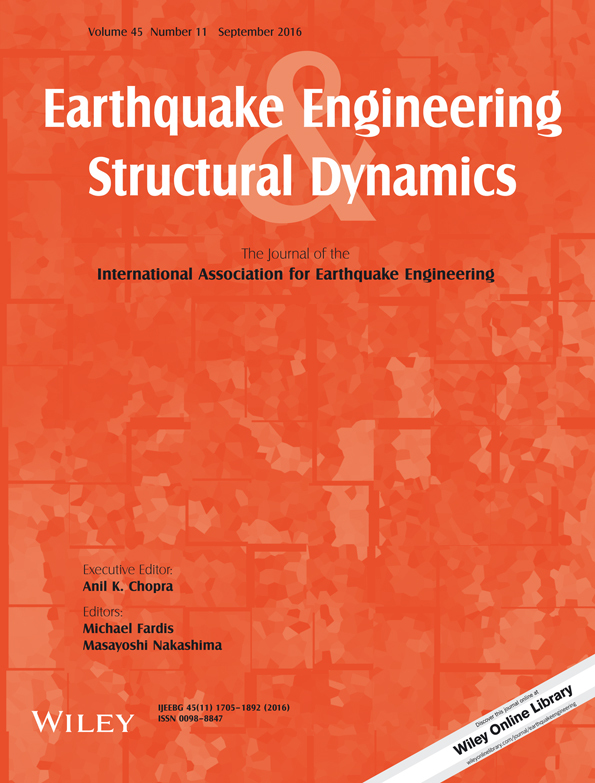A rate-dependent constitutive model of high damping rubber bearings: modeling and experimental verification
Summary
In this study, a constitutive model of high damping rubber bearings (HDRBs) is developed that allows the accurate representation of the force–displacement relationship including rate-dependence for shear deformation. The proposed constitutive model consists of two hyperelastic springs and a nonlinear dashpot element and expresses the finite deformation viscoelasticity laws based on the classical Zener model. The Fletcher–Gent effect, manifested as high horizontal stiffness at small strains and caused by the carbon fillers in HDRBs, is accurately expressed through an additional stiffness correction factor α in the novel strain energy function. Several material parameters are used to simulate the responses of high damping rubber at various strain levels, and a nonlinear viscosity coefficient η is introduced to characterize the rate-dependent property. A parameter identification scheme is applied to the results of the multi-step relaxation tests and the cyclic shear tests, and a three-dimensional function of the nonlinear viscosity coefficient η with respect to the strain, and strain rate is thus obtained. Finally, to investigate the accuracy and feasibility of the proposed model for application to the seismic response assessment of bridges equipped with HDRBs, an improved real-time hybrid simulation (RTHS) test system based on the velocity loading method is developed. A single-column bridge was used as a test bed and HDRBs was physically tested. Comparing the numerical and RTHS results, advantage of the proposed model in the accuracy of the predicted seismic response over comparable hysteretic models is demonstrated. Copyright © 2016 John Wiley & Sons, Ltd.




